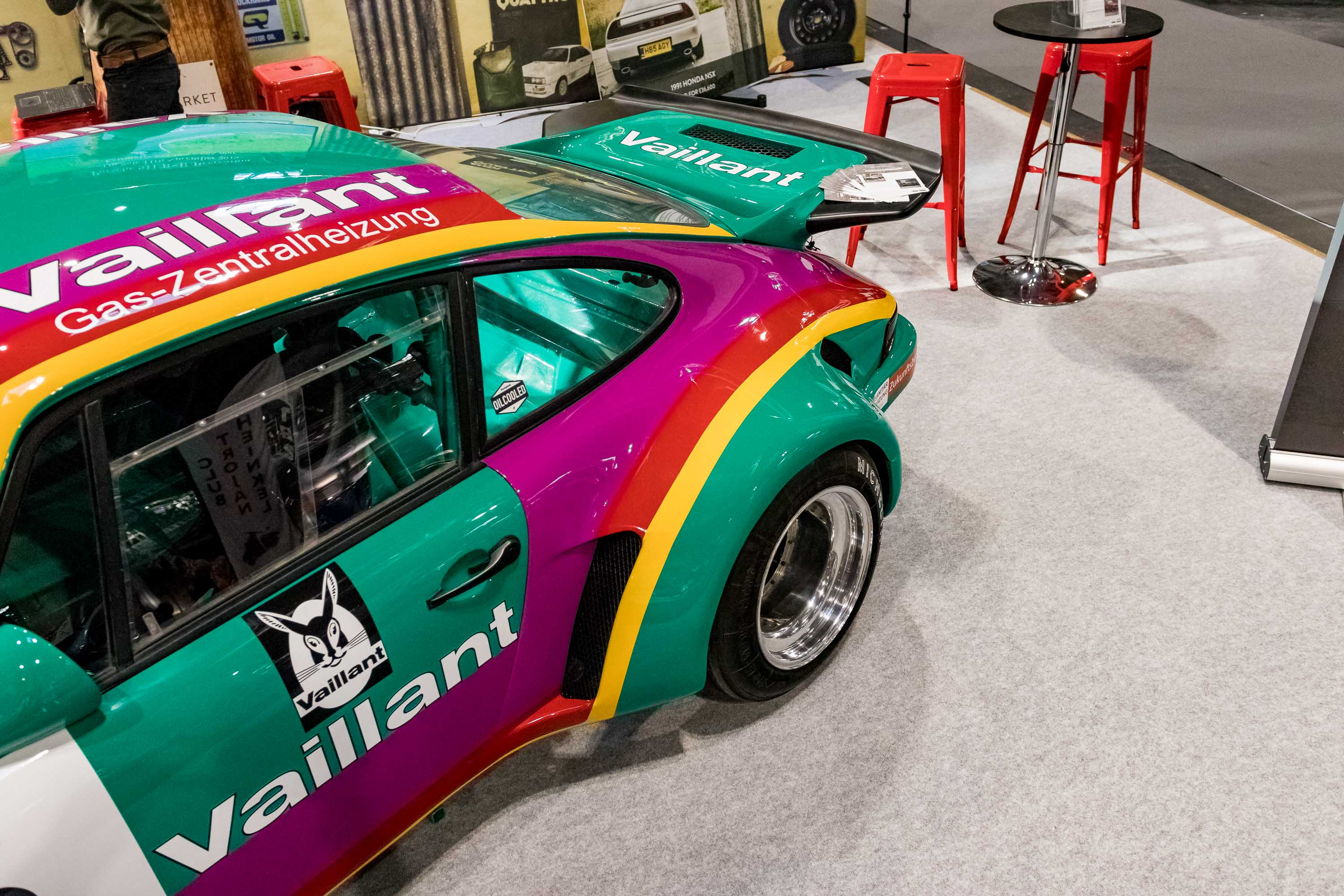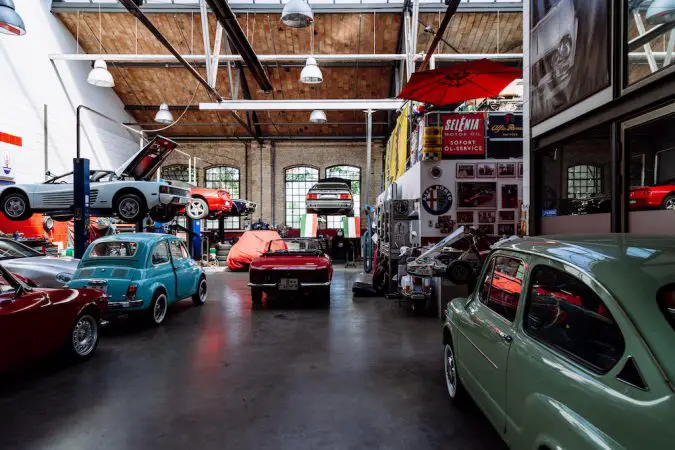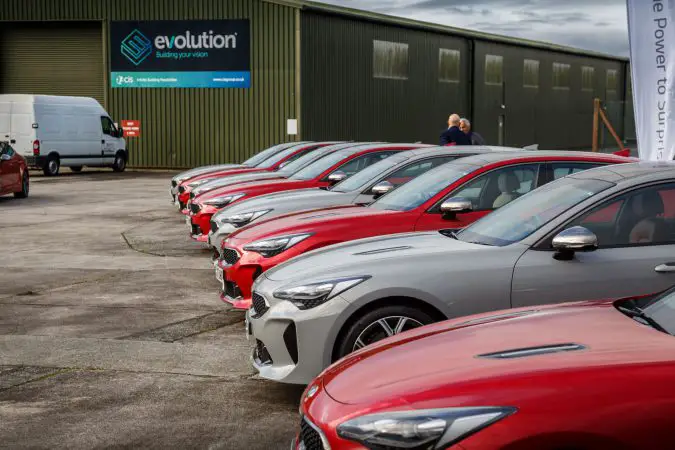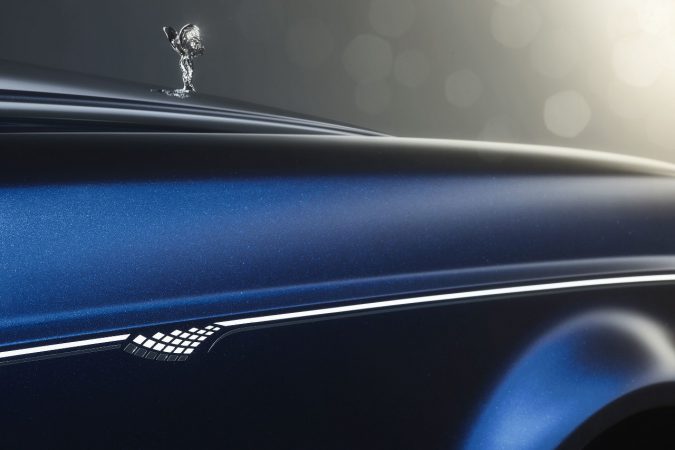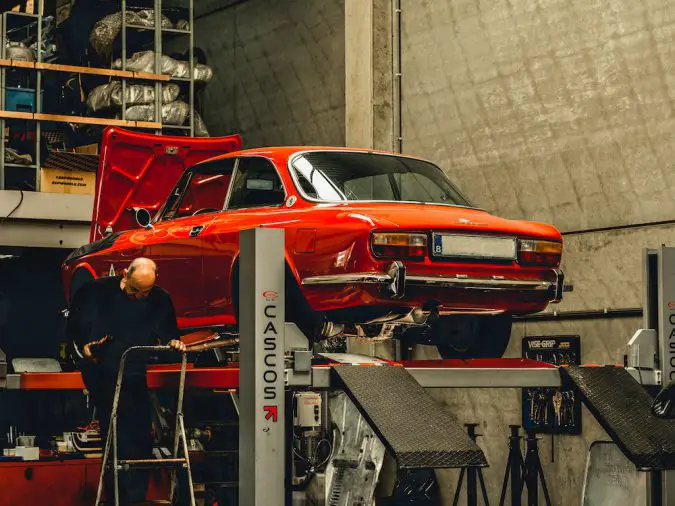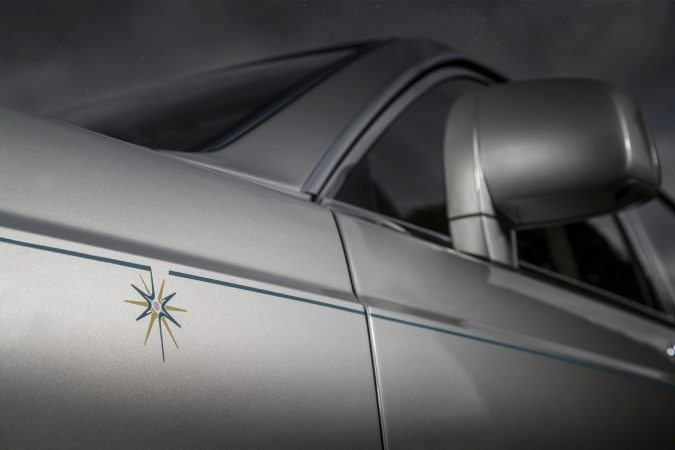One of the most daunting aspects of buying a new car – in my view, anyway – is picking the color. Oh sure, the salesmen will haggle every penny out of you with the options list. Heated seats, over-the-air software updates, safety systems, and etcetera. But no matter how well you navigate that minefield, you’ll then be left stuck with the paintwork. So, what are the best car colors that you ought to pick?
There’s a good reason why you should be a bit anxious and reserved when picking the right color for your car, though. Unlike those options, paint is a bit more permanent. You can easily swap the radio out for something else down the line. Plus, that won’t be a ludicrous expense, either. But paint? Nah, getting a new paint job – or even a “simple” wrap – is going to cost you thousands for a fresh coat.
As such, it’s important that you get the right shade of color you want right out of the gate. Wanting to change it later will be a tremendously expensive regret. But how can you choose the best color? Do you want paint that’s easy to clean? Or, perhaps you want the prettiest paint there is? Or, maybe you want paint that’ll hold its value well? Well, here are some of the best car colors today…
Any Tips On How Can You Pick The Best Car Colors?
Since we’re discussing the best car colors, it’s worthwhile to go off on a bit of a tangent and discuss how you can pick the best car colors. In other words, how can you choose between the myriad and variety of car paint options? After all, it’s not a simple consideration for most of us. Some cars might look pretty good in one color. But as you look closer at what’s possible, you then start to wonder.
Indeed, not all car paints are made and affect us the same way. Some hold a greater emotional value and cachet. Notice how everyone who buys a Ferrari tends to just pick red? There’s a connection with that racy red in Ferrari’s long history in the world of motorsports and Formula 1. Hence, why Rosso Corsa is such a treasured color for Ferrari fans around the world. For others, it’s a practical choice.
They might pick a color that’s easy to clean, and won’t show off dirt as prominently. Or, they might gravitate to picking out a paint that they know will hold the resale value of the car. Research shows that most folks tend to pick the color of their cars based on emotions rather than reasoning. So, it’s also quite likely that you’ll just opt for whichever color makes the best impression on you.
If only there’s a quick checklist of the many criteria that goes into considering the right colors that suit your car. To help you out, here’s a quick round of tips and tricks to get you started. Even it can’t help you pinpoint the best car colors for your new automobile, it could at least narrow things down. This should make your ordeal at the showrooms that bit easier…
1. Ease Of Cleaning And Maintenance Based On Car Colors
Seeing how expensive a fresh coat of paint can be, you’ll no doubt want to take good care of it while it’s still fresh. Even better, try opting for a paint finish and color that’s the easiest to maintain in the long run. If ease is what you’re looking for, simple gloss paint in a duller or darker color is best.
More glitzy paint finishes – such as matte, pearlescent, or metallic coats – aren’t just tough to keep it looking neat. But once there’s a smidge of paint damage, repairing it will be a costly affair. Brighter colors – such as bright red or yellow – might also be pricier to maintain, owing to their pigmentation.
2. Hiding All That Dirt And Muck With The Right Car Colors
Getting your car washed every other day is healthy for its paintwork, sure. Nonetheless, you probably won’t have the time or energy to dedicate that much attention to it. Thus, it’ll be incredibly helpful to pick out a color that doesn’t show off those imperfections so vividly in detail.
We’re talking about dirt, mud, road salt, grime, oils, or even damage such as dings and scratches. It’s a fact that darker paints – such as black or a darkish blue – magnify those tiny details. If you’d prefer your neighbors to not notice, then a brighter color – white, silver, or grey – hides them rather well.
3. How Visible Do You Want Your Car Colors?
The next point of consideration is how visible do you want to be? Are you keen on challenging the boundaries of the local speed limits? The cops will pull you over, irrespective of what color your car is. However, an inconspicuous color, such as black, may disguise you in the darkness a tad better.
Speaking of disguise, the visibility of that paint affects safety, too. Researchers show that white cars – as well as other brighter colors – are 12% less likely to be involved in a crash. This is all down to how easy your vehicle is to spot with decreased visibility at night compared to say, black.
4. Car Colors That Hold Their Resale Value
We’ll dive deeper into this topic in a bit. For now, though, it’s fair to say that your car’s paintwork can play a major role in its resale value. After all, the audience for a bright pink car is possibly quite a bit smaller than those looking for a black car. In short, neutral colors tend to be the safest bet.
These are shades such as white, silver, grey, or black. Although they may be safer and could decently hold their value well, there’s an argument to be made about going bold. Bright, sparkly, unique, and daring colors such as bright purple or neon green are rarer and are thus command exclusivity.
5. Weather And Lighting Effects On Car Colors
There’s a reason why they say “you won’t believe it until you see it”. Simply put, most car colors can appear very different in person than through a brochure or website. Additionally, some paints look a whole lot nicer – or worse, it depends – as you put it under the sun, not the showroom lights.
So, always have various lighting perspectives when choosing the paint hue and finish. On top of that, we also have the weather to think about. Picking black or dark paint if you’re in sunny Miami sounds like an unpleasant idea. Darker colors absorb and contain heat more potently than lighter shades.
How Do The Best Car Colors Affect Your Ride’s Resale Value?
This is one rabbit hole that we’ll inevitably have to jump into as we talk about the best car colors. So, how can paint affect the potential resale value of a car – it’s just paint, right? The truth is significantly more nuanced than you might expect. Remember, the paint finish and colors could make or break a would-be buyer’s first impression. If they don’t like the color, they’re likely not interested in the car.
It doesn’t matter how diligent you’ve been with servicing it, or how careful you’ve been with its many moving parts. Personally, I’d gladly ignore even the most pristine car in the world… If the color sits poorly with my eyes. This effect could easily impact a car’s potential resale value, especially if other buyers share the same distaste that I have for a particular color and paint finish.
What that in mind, it’s not enough to pick a color that YOU like, if you’re financially conscious. You also have to cater the paint color and finish to what OTHERS may like to buy ten years in the future when you’re ready to sell your car. Still, optimizing your options based on resale value is quite tricky to navigate. That’s because we have to fine-tune the paint based on three categories…
1. Best Car Colors Resale Value – By The Actual Color
We touched on this earlier, as some colors may hold value better than others. As a reminder, darker or neutral colors – whites, silvers, greys, blacks, or very dark blues and purples – are a safe bet. This is a good palette to choose from if you’d rather not risk your car depreciating in value.
But, you still get a color that’s acceptable and easy to live with on your end. However, some argue that it’s better to pick rarer colors. These include trendy, cool, and bright colors such as red, green, yellow, orange, purple, or shades that are equally as attractive. It’s a gamble, though.
By picking a bold hue of color, it’s possible that not as many folks might be as keen. On the flipside, such daring colors are rare, and it gives your car a boost in exclusivity that may, in fact, increase or hold its resale value even better. This rarity aspect is something that you’ll have to research.
2. Best Car Colors Resale Value – By The Vehicle Segment
Interestingly, some colors work better for their resale value based on their vehicle segment. So, this one color here might be more popular on a sedan, but not so much on an SUV. These variations can be quite minimal, so the differences are arguably negligible.
For example, a Honda dealer claims that white is a popular choice among sedans. These include the Accord or Civic. Therefore, its depreciation – by percentage – is lower than a white pickup truck, like the Ridgeline. For trucks, grey is the better color, as it holds its resale value a tad better.
3. Best Car Colors Resale Value – By The Demographic
Last but not least, you have to pick the right color for your future buyer once you’re ready to part ways with your car. When looking at the demographic, you’ll then split the difference at gender, age group, ethnicity, and so on. Stereotypes aside, these can make a difference.
The differences may be subtle. For example, a study done on Miami residents show that men prefer white cars, whereas women prefer silver or grey ones. In another scenario, we can look at their race, ethnicity, and culture. Red is considered a very lucky color in East Asia, symbolizing fortune.
As such, folks with Chinese, Korean, or Japanese ancestry might tend to pick those colors. If we’re to peek at age, the elderly may gravitate towards paints that are subtle and easy to maintain. Hence, a silver, white, or beige color might be preferable for them rather than something bright.
What Are The Most Popular Of The Best Car Colors Today?
In what can be considered a somewhat grim reality of the best car colors today, a lot of vehicles tend to be painted in more monochromatic hues. This has been the case for the past 10 to 20 years where entire car lots are 50 whole shades of grey, white, black, or silver. In some markets such as the UK, grey – in my view, the most neutral color – has been the best-selling color for a long time now.
PPG, one of the largest makers of car paints, released a study that showed how popular white is for SUVs, pickups, and minivans. Up to a third of these vehicles are painted in some shade of white. In the sedan market, meanwhile, metallic finishes in a white, silver, black, or grey hue are highly sought after. The same goes for hatchbacks and even sportier cars.
Here is a more thorough breakdown per vehicle class and its respective popular car color choices, as per that PPG report. These represent just how much of the market share for each segment the colors take up…
1. Most Popular Car Colors – SUVs And Crossovers
- White – 24.5%
- Black – 20.5%
- Grey – 19%
- Silver – 11.5%
- Blue – 10%
- Red – 8.5%
- Green – 3%
- Beige/Gold – 1.5%
- Brown – 1%
- Orange – 0.5%
2. Most Popular Car Colors – Pickup Trucks
- White – 28%
- Grey – 24.5%
- Black – 17.5%
- Silver – 11%
- Red – 9%
- Blue – 5%
- Green – 3%
- Beige/Gold – 1%
- Brown – 1%
3. Most Popular Car Colors – Minivans
- White – 34.5%
- Black – 15%
- Grey – 15%
- Silver – 12%
- Blue – 10%
- Red – 8.5%
- Beige/Gold – 2.5%
- Green – 2%
- Brown – 0.5%
4. Most Popular Car Colors – Luxury Cars
- White (Pearl/Metallic) – 31.75%
- Black – 19.25%
- Grey – 17.5%
- Blue – 9.75%
- Silver – 9.75%
- Red – 7.25%
- Beige/Gold – 1.75%
- Green – 1.75%
- Brown – 1%
- Orange – 0.25%
5. Most Popular Car Colors – Midsize Sedans, Station Wagons, Hatchbacks
- White (Solid/Metallic) – 28%
- Black – 20.5%
- Grey – 18%
- Silver – 14.5%
- Blue – 9%
- Red – 9%
- Beige/Gold – 1%
6. Most Popular Car Colors – Sports/Muscle Cars, Convertibles, Coupes
- Black – 22%
- White – 16%
- Grey – 16%
- Blue – 15%
- Red – 14%
- Silver – 6.5%
- Green – 5%
- Orange – 5%
- Beige/Gold – 0.5%
The Best Car Colors That Are Easy (And Also Hard) To Upkeep
It’s safe to say that folks today are much more cautious than flamboyant when it comes to picking a color for their cars. A bit of a shame, I think, given how many wonderful colors there are. As per a report by Forbes, 72% of new cars sold are monochrome – white, black, grey, or silver. Nearly 50% of the Asian cars sampled are painted white. In North America, almost a third of cars are white.
This is followed by black and grey (around 19% each on average in North America), with silver closely trailing behind (approximately 10%). Grey, however, is on a resurgence, having risen in popularity by its most in 10 years. In a nutshell, the easiest choice you can make is to coat your car in any of these 50 shades of monochrome. But is it really the best that you can do for your car?
As we discussed earlier, cleaning and maintaining that paintwork can be a chore. So, among some of the more commonly favored hues, which paint colors are the easiest (and also the hardest) to care for?
1. White
Most people pick white for a good reason, and that’s because it ages like fine wine. It doesn’t show off scratches and scrapes, and it plays down those swirl marks from an automated car wash. Yet, it becomes an issue if you’re driving through thick pools of mud and dirt, which shows off easily.
2. Black
It’s one of those colors that looks good on any vehicle, for any occasion. Although, this goes both ways. Black paint appears at its finest when kept clean. But only a few miles of driving later, and every speck of dirt and dust will stick out like a sore thumb against the black backdrop.
3. Grey
If I have to pick one of these frankly dull monochrome colors, grey would be my top pick. As an inherently neutral color, it’ll always remain a handsome choice. It’s also quite easy to maintain, as any dirt, dust, scratches, and damage can camouflage more subtly with grey paintwork.
4. Silver
Just like grey, silver paints are also fairly easy to maintain. Being darker than white means that even large splotches of muck won’t make themselves known too obviously. Moreover, any build-up of mud, dirt, or road salt along your car’s side skirts and fenders can (mostly) be kept hidden.
5. Blue
The diverse variety of blues are generally harder to clean and maintain. Darker blues, especially, can accentuate even the tiniest specks of dust and dirt. Regardless, you might also notice water spots a tad easier (and the need to learn how to get water spots off car) when it’s blended with blue paint, not to mention other forms of damage like scratches.
6. Red
A favorite of mine, red is a bright and flashy color, which nonetheless, can hide grime and mud a bit better than the others. The issue here is that once red paint gets too dirty, it can appear rather dull quite easily. Thus, it’s a moderately high-maintenance color if you’re keen on it looking fresh.
7. Yellow
As with red, a vibrant look-at-me yellow paint can hide dust, dirt, or pollen very neatly. Unfortunately, this does come at the cost of mud splashes, which can be highly conspicuous. Park it up after a rainy day’s worth of driving, and all that mud and grime that you just drove through will be a sore sight.
8. Orange
There’s a benefit to finding that middle ground between red and yellow. Generally, orange coats can hide dust and dirt just as well as yellow or red paint. In addition, any splashes of mud or salt won’t be too apparent, and neither will orange dull so quickly. It’s a fairly easy color to clean off, too.
9. Green
Depending on the exact shade of green that you pick, darker greens can present imperfections with a more in-your-face approach than the lighter colors. However, it can at least disguise any damage or dirt for a little while before a cleaning becomes necessary. Green is quite easy to care for, as well.
What Are Some Insights On The Best Car Colors For 2021 And Beyond?
Let’s say you’re reading this, and want a quick answer to the best car colors for your new car in 2021 and beyond… What would that color be? Fascinatingly, the folks over at Kelley Blue Book (KBB) and its panel of experts at BASF – another major paints company – have since narrowed things down to just three colors. These are the top-most trending and best car colors for 2021…
- Redolent Red – Muted reddish-brown color, appearing classically charming and elegant.
- Dark Seltzer – Medium dark grey color, with intense coarseness and texture in the paint.
- Abstraction Blue – Solid blue color, flowing with a sort of milky enameled finish.
That’s just for the North American market, mind you. Different regions around the world have their own tastes when it comes to choosing the best car colors. Here’s what BASF’s Code-X trend report for 2020 and 2021 has to say about the top car color choices for the EMEA car market. That’s Europe, Middle East, and Africa…
- Hiatus Grey – Mid-dark grey color, with a seemingly rough finish and a metallic sparkle.
- Pundits Solution – Deep beige color, which is then oddly mixed in with gold metallic flakes.
- Intron Green – Turquoise-like bright apple green, almost like mint, with a bright texture.
And let’s not forget the best car colors for the Asia Pacific markets, rounding off the top color picks for each major region…
- Dream Fighter – Chromatic bright orange, with a tinge of pink, copper, and gold.
- Social Camouflage – Dark green-blue color, with a texture smoky-like finish.
- Unknown Metal – Metallic light grey-purple, with a neutral tone yet rich in the right lighting.
Car Colors: Facts
- PPG’s study revealed that white is the most popular car color in the US, followed by black, grey, and silver.
- Car brands such as Chevrolet, Kia, and Toyota are expanding their color palettes to offer a more exciting range of hues.
- Acura’s new PMC Edition TLX features the Long Beach Blue color that was introduced last year on the NSX.
- Audi’s S6 and S7 models come with the new Arrow Gray color that pairs with a Brilliant Black roof exclusively.
- Bentley’s new Purple Sector paint job complements the dramatic styling of the Bentley Batur prototype.
- BMW’s 2 Series Coupe is the only current BMW model that offers the new Thundernight Metallic purple paint as a standard option.
- Cadillac’s CT4-V and CT5-V Blackwing models come in the new Electric Blue color alongside other shades like Blaze Orange and Infrared.
- The Ford Mustang Dark Horse features a bold Blue Ember exterior with black accents to amplify the car’s aggressive exterior.
- Jeep’s Gladiator and Wrangler models were available in the desert-inspired Gobi Tan color for a limited time this year.
- Lamborghini’s Huracan Sterrato comes in the matte Verde Gea Lucido paint job that debuted at launch, giving the car a more upscale look.
- Porsche’s new Frozen Berry paint is one of the many hues available for the latest model year, and it’s available for the Taycan, 718 Boxster, and Cayman.
- Rivian’s R1T pickup comes in the unique Compass Yellow color that costs $2,500 as an option, and the Rivian Blue color makes the electric pickup pop on the road.
- Rolls-Royce’s Boat Tail builds feature a pretty brownish-beigeish-pinkish hue inspired by its pearl magnate owner, while the Cullinan debuted the bold Lime Green color for the Inspired by Fashion collection in Miami.
- Toyota’s new Crown model looks striking in the combo of Bronze Age paint and black accents.
Best Car Colors – Final Thoughts, And What To Pick?
The rest of BASF’s Code-X car color trend report makes for a fascinating read, so we do recommend checking that one out once you’re done here. In summary, though, there are a few other noteworthy points raised in that report that we ought to share with you. For starters, and in a surprise to no one, greyscale colors – grey, black, white, and silver, respectively – will remain popular in the near future.
Another great takeaway from that report is how folks will be picking their colors from now on. The experts have shown that in 2021, there’s a growing emphasis on the texture and subtle details of car paint options. In a nutshell, this means that people are paying closer attention to the metallic flakes, sparkles, texture, or coarseness of a particular paint, and how that sits with their eyes.
This is rather than being wowed simply by drastic changes in the color palette, like vibrant paints. As such, we can probably expect that more textured paints – those with a lot of sparkles, specks, and richness in their finishing – to become ever popular over the next few years. That’s compared to highly lurid or daring hues of the past. That’ll be handy to know if you’re strategizing your colors.

